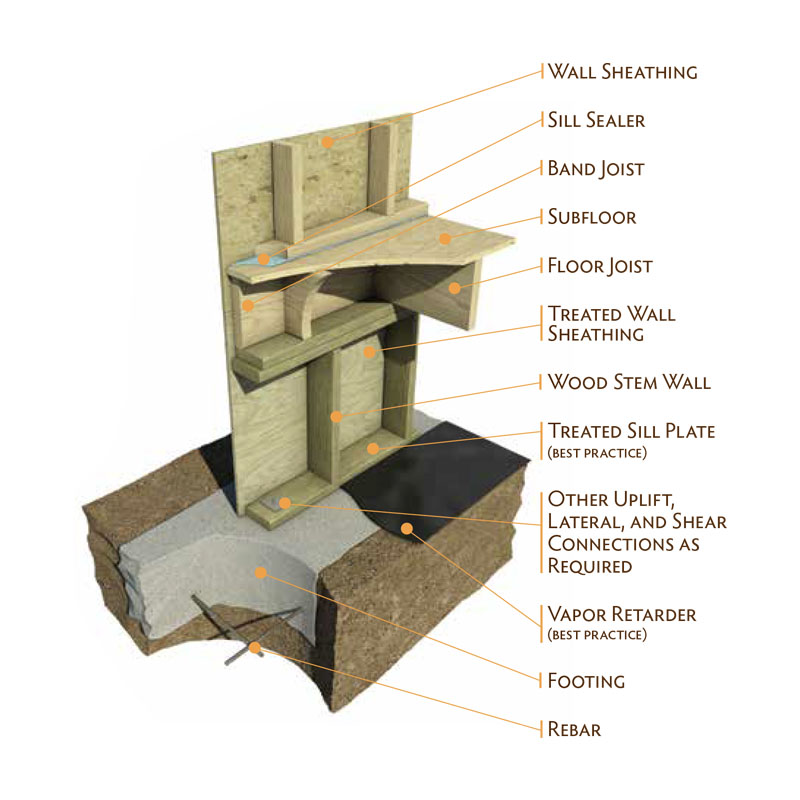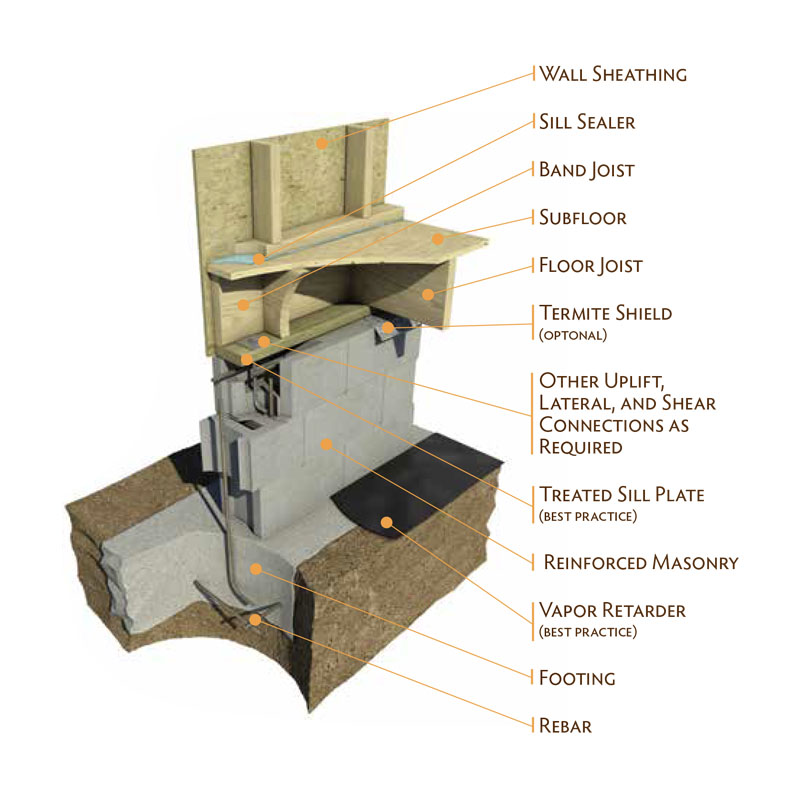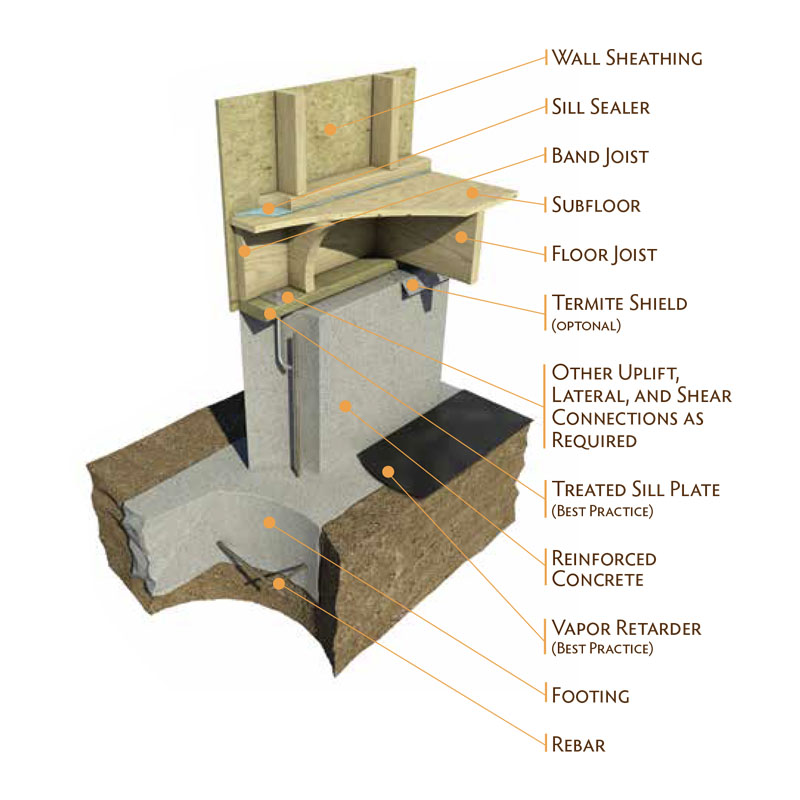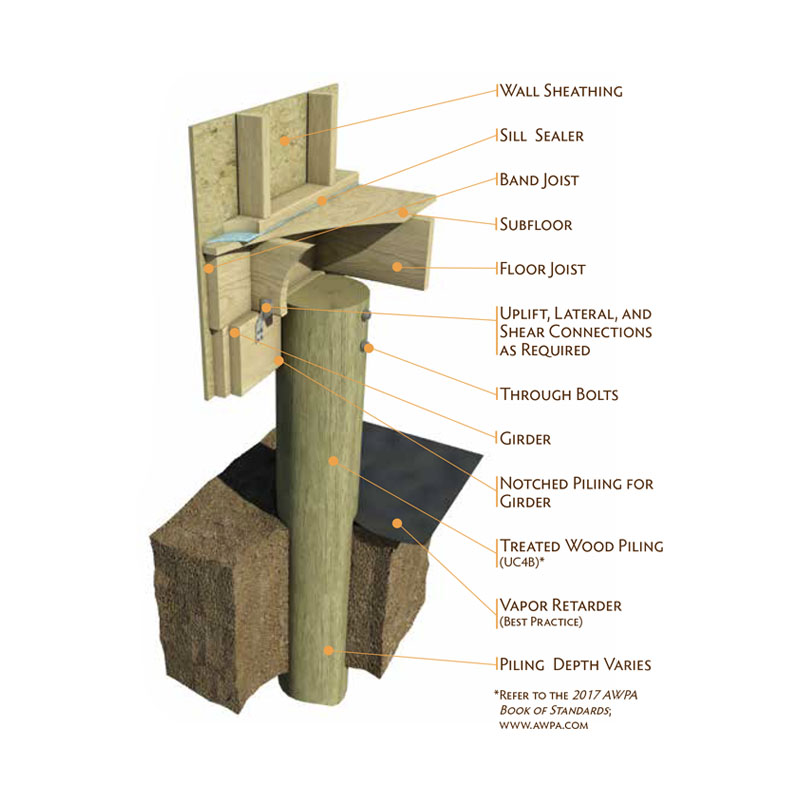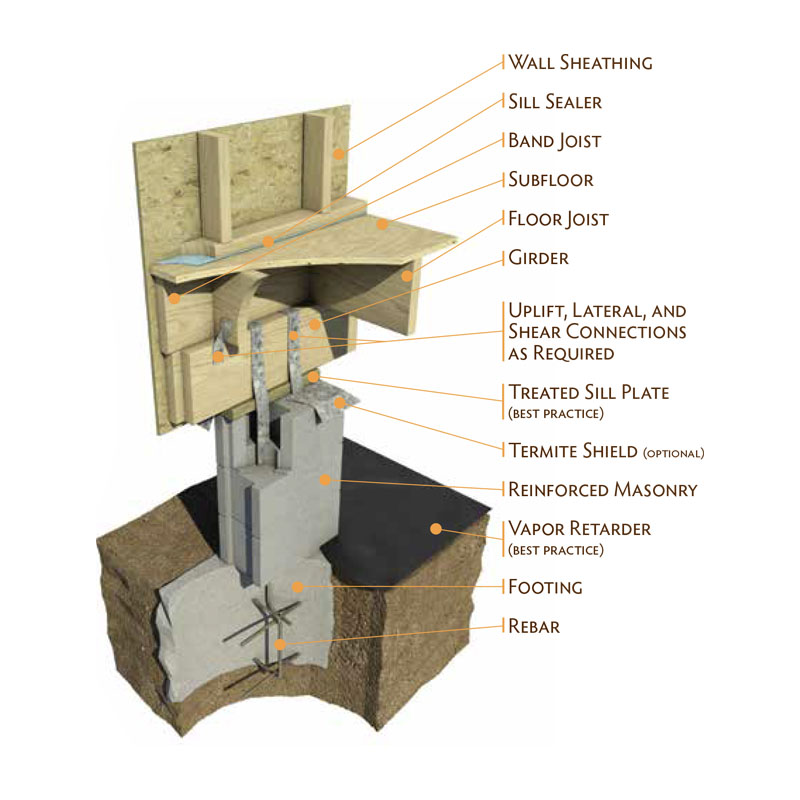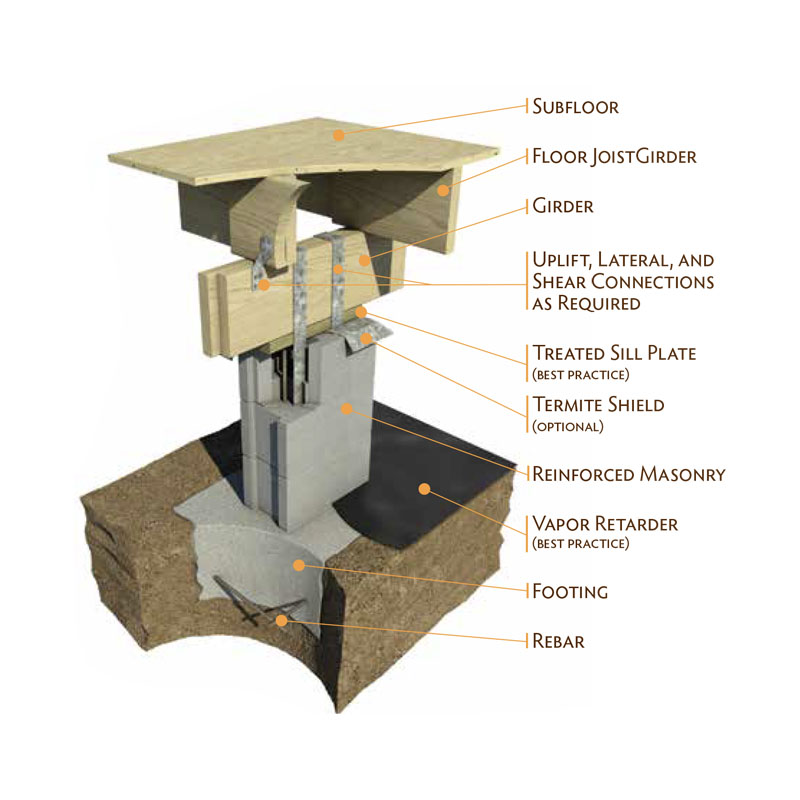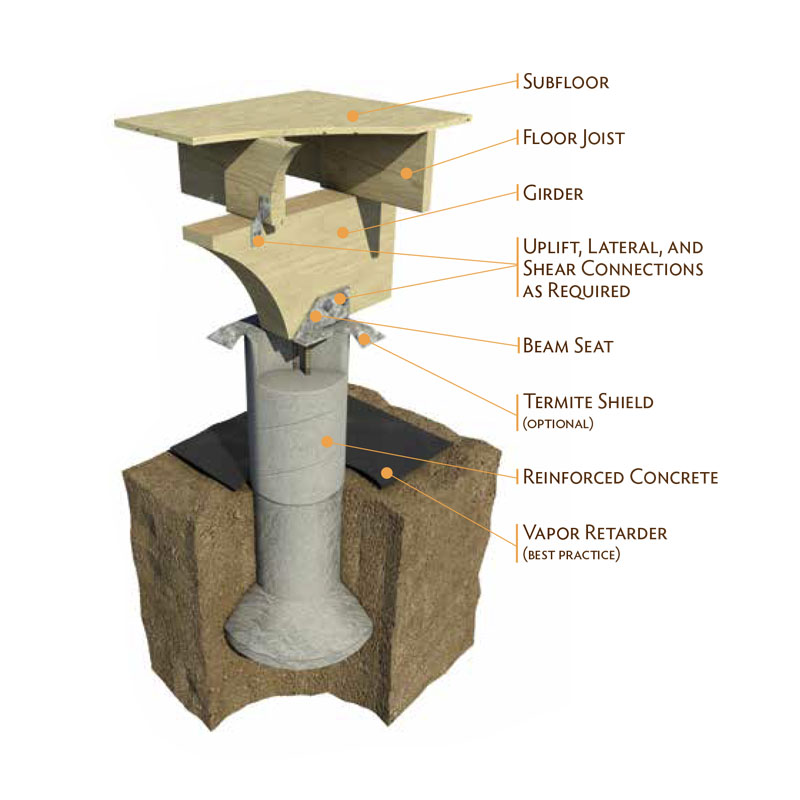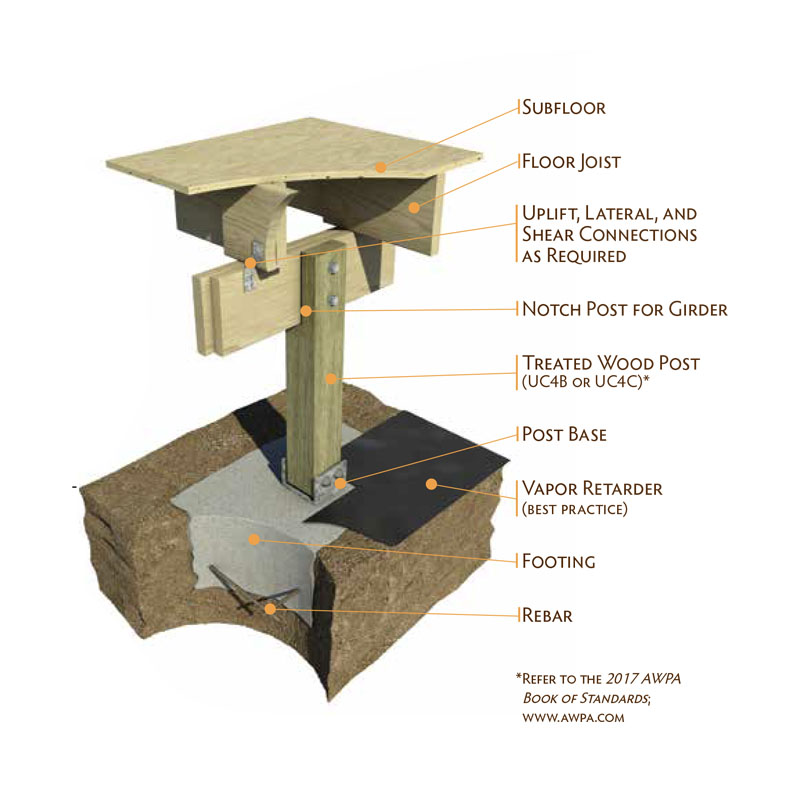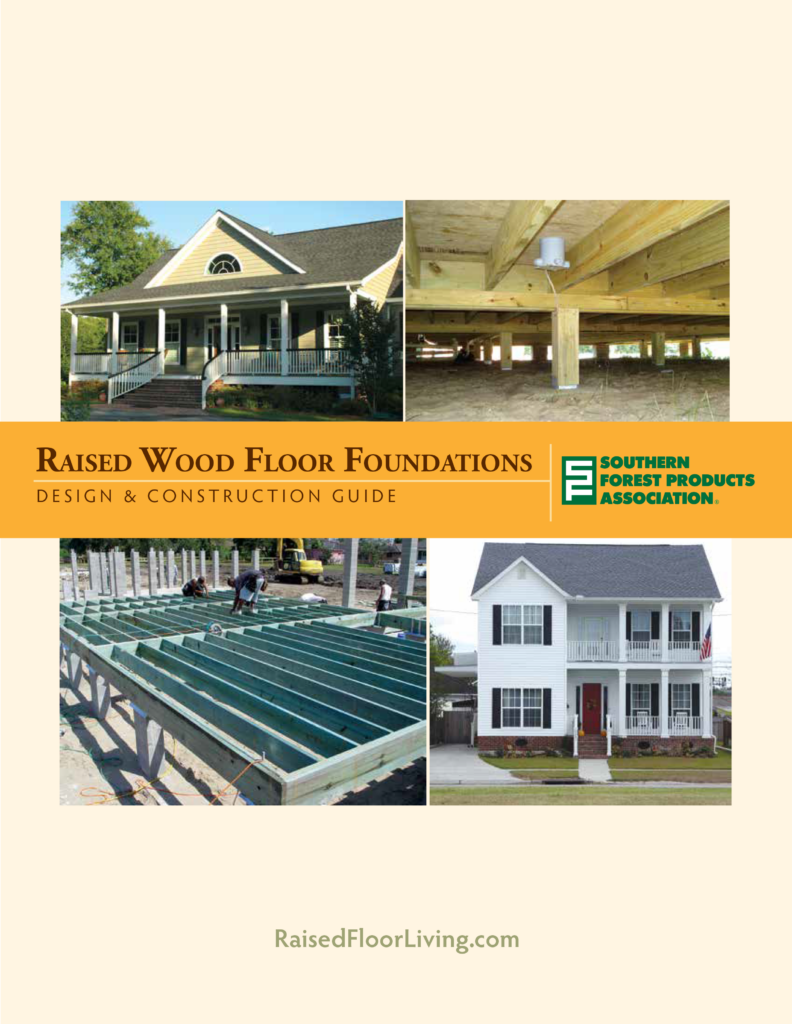Foundation Options
Raised Wood Floor
Foundation Options
A home’s desired finished appearance will always influence what type of raised wood floor foundation you select. But with many foundation options available, raised floor homes can be built anywhere, meeting virtually any criteria.
There are three raised wood floor foundation options to choose from depending on your situation and needs:
Continuous Stemwall
One of the foundation options for raised woof floor construction is the fully enclosed foundation, which are typically specified with continuous foundation walls, often called stemwalls. Stemwalls require continuous footings, but this design replaces the need for girders, providing continuous support to single sill plates and the structure above.
As with pier construction, stemwalls may be built with a variety of materials including concrete masonry units (CMUs), formed concrete, and wood foundation walls, each providing design versatility and exterior finishing options.
Wood Stemwall on Spread Footing
Stemwall foundations – enclosing the entire perimeter of a crawlspace – can be built most efficiently using pressure-treated Southern Pine. This option can save time and money by eliminating the need for masonry work. Also referred to as “pony walls,” wood foundation walls should be built on continuous footings finished above grade and backfilled to below the face of the foundation wall.
Wood stemwalls perform well in vented crawlspace construction but may also be specified for closed conditioned/semi-conditioned crawlspace construction.
Masonry Stemwall on Spread Footing
Masonry foundation walls may be the most common method used for enclosed vented and unvented crawlspaces. Construction techniques for masonry foundation walls vary little by climate or region in terms of the required rebar reinforcement, the concrete or mortar fill to the finished height of walls, and the loads they are designed to support and resist.
When compared to other foundation wall options, construction of masonry foundation walls typically requires more labor, and possibly more building inspector visits during the foundation stage.
Concrete Stemwalll on Spread Footing
Poured concrete foundation walls are an option for vented and unvented enclosed crawlspace construction. The construction of poured-in-place concrete foundation walls is typically done as a second stage to the concrete footings to allow for the correct placement of all required wall reinforcements.
Although concrete foundation walls can be complex, requiring construction of forms and temporary bracing, they offer high integral strength in high-wind and/or flood-prone areas. Some builders prefer poured concrete foundation walls where unbalanced backfill heights of finished grades can be an issue.
Pier and Beam
Another of the foundation options is the pier-and-beam, which offers a high level of versatility, specific to the dead, live, seismic, and wind loads to be supported and/or restrained, and to the girders or sill beams, floor joists, and their respective span capabilities.
Exterior Wood Piling
Pressure-treated wood piles are a common foundation for homes built in beachfront locations, as well as in other areas where soils have minimal bearing capacity. The cross-section area of a pile has little to do with its bearing capacity. The actual bearing support of the pile is the surface friction of the sand or soil encapsulating the pile below grade.
Cantilevered floor joist systems are sometimes preferred in conjunction with this type of foundation to allow tolerance for pile placement.
Perimeter Masonry Pier on Grade Beam
Open crawlspace foundations are typically built with masonry piers on continuous grade beams or footings where the stability and bearing capacity of the soils are sufficient to support loads. The continuous footing “ties” the foundation together, resisting any lateral movement from the bearing soils while providing support for individual piers distributed over a larger area compared with spot footings.
Specifying masonry piers ensures precise placement and eliminates the need for cantilevered floor joist systems. This allows exterior wall sheathing panels to be installed continuously over wall frames above the floor girders.
Interior Masonry Pier on Spot Footing
Spot footings are often more cost efficient than continuous footings where soil bearing of sufficient capacity and stability exists. Masonry piers placed on spot footings to support floor-frame systems at the interior of the structure are typically not subject to either lateral or uplift loads. Therefore, they may not require the same reinforcement as those at the exterior perimeter.
Straps or anchors that provide stability throughout floor-frame construction will typically require only concrete fill in a single concrete masonry unit (CMU) column, facilitating the connection of anchors or straps within the pier. Depending on the height of the pier, no concrete fill would be required where straps may be wet-set into the spot footing.
Interior Concrete Pier on Bell Footing
Poured-in-place concrete piers may be formed and poured separately from concrete footings. With careful planning, they may also be poured at the same time as footings, reducing the number of required inspections and overall construction time.
Cylindrical cardboard tubes are often used as forms for round columns; square columns may use temporary forms or purpose-specific reusable forms. In either case, when poured-in-place concrete columns are specified and poured at the same time as the required spot footing, the resulting bell shape of the flared column base below undisturbed finished grade can provide enhanced uplift resistance for the structure.
Interior Wood Post on Spot Footing
Pressure-treated wood posts, including solid lumber such as 6x6s, or multiple plies of dimension lumber, may be installed on appropriate post anchor bases and attached to the top of the footing or wet-set into the footing.
Some builders prefer to wet-set pressure-treated wood posts into appropriately sized concrete spot footings. Uplift resistance can be provided by inserting reinforcement bars or bolts into the post before pouring concrete. In such cases, it is recommended to take appropriate steps to prevent surface water penetration into any cavity between the concrete spot footing and the wood post since it may shrink over time.
Closed Crawlspaces
A closed crawlspace – also referred to as an unvented, conditioned, or sealed crawlspace – is a dry, energy-efficient, and practical option for residential construction.
The benefits of a closed crawlspace include:
- Dryness and durability because of air sealing, insulation, and moisture control measures.
- Suitability to sloped and infill sites, as well as challenging soil conditions.
- Simplified trade and inspection scheduling
- Improved whole-house energy efficiency as closed crawlspace temperatures are more stable than an attic or a vented crawlspace, and the ability to locate ducts and mechanical equipment in the space reduces heating and cooling loads.
- Simplified HVAC, plumbing, and mechanical installation and maintenance.
Check out SFPA’s series of instructional videos on the various stages of closed crawlspace construction:
Check out our Raised Wood Floor Foundations publication, a comprehensive design and construction guide for using Southern Pine for raised wood floor systems.
Click below to learn more about:
